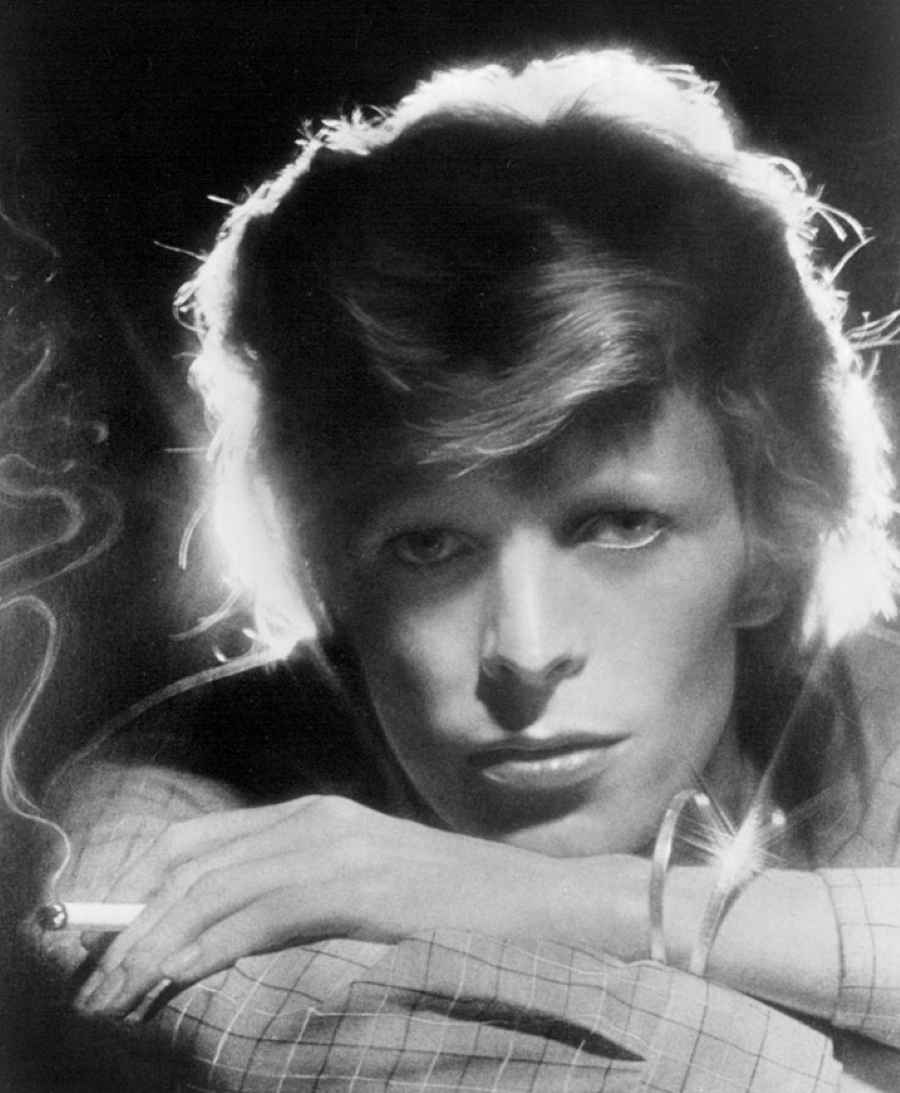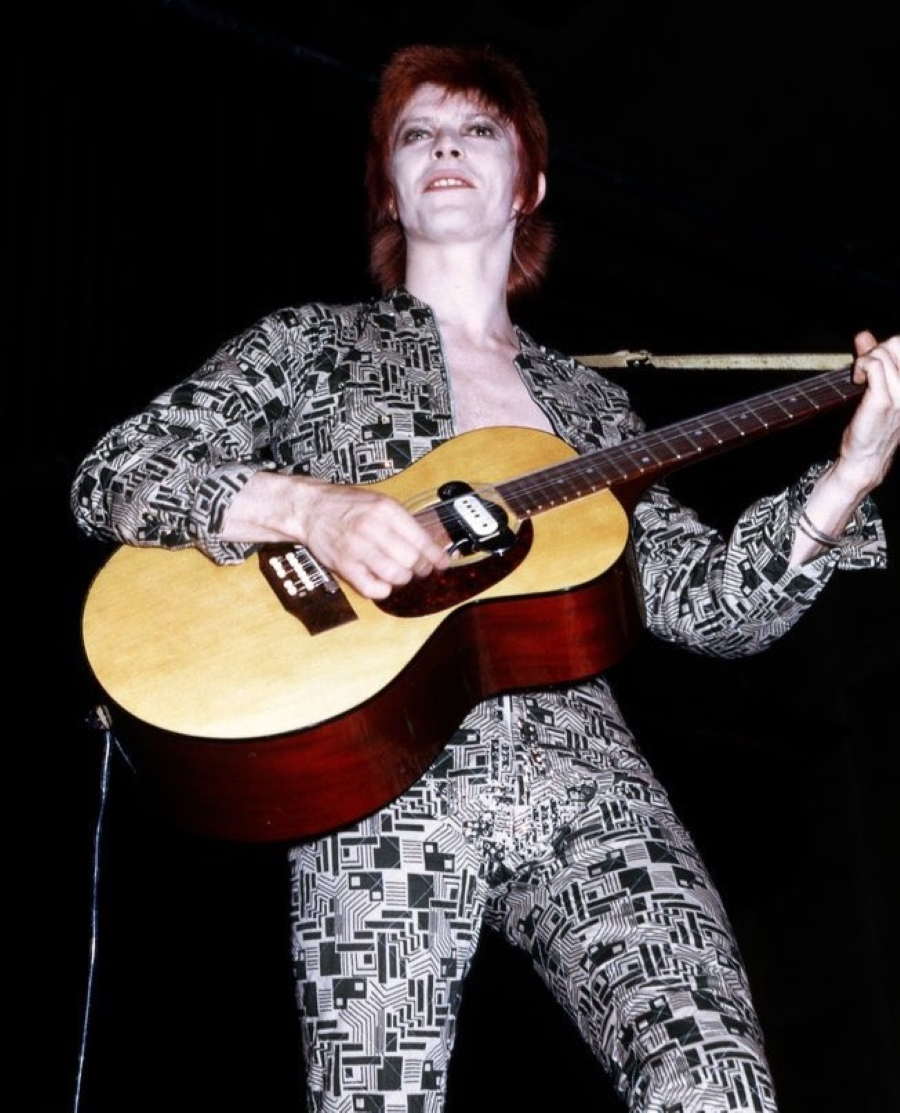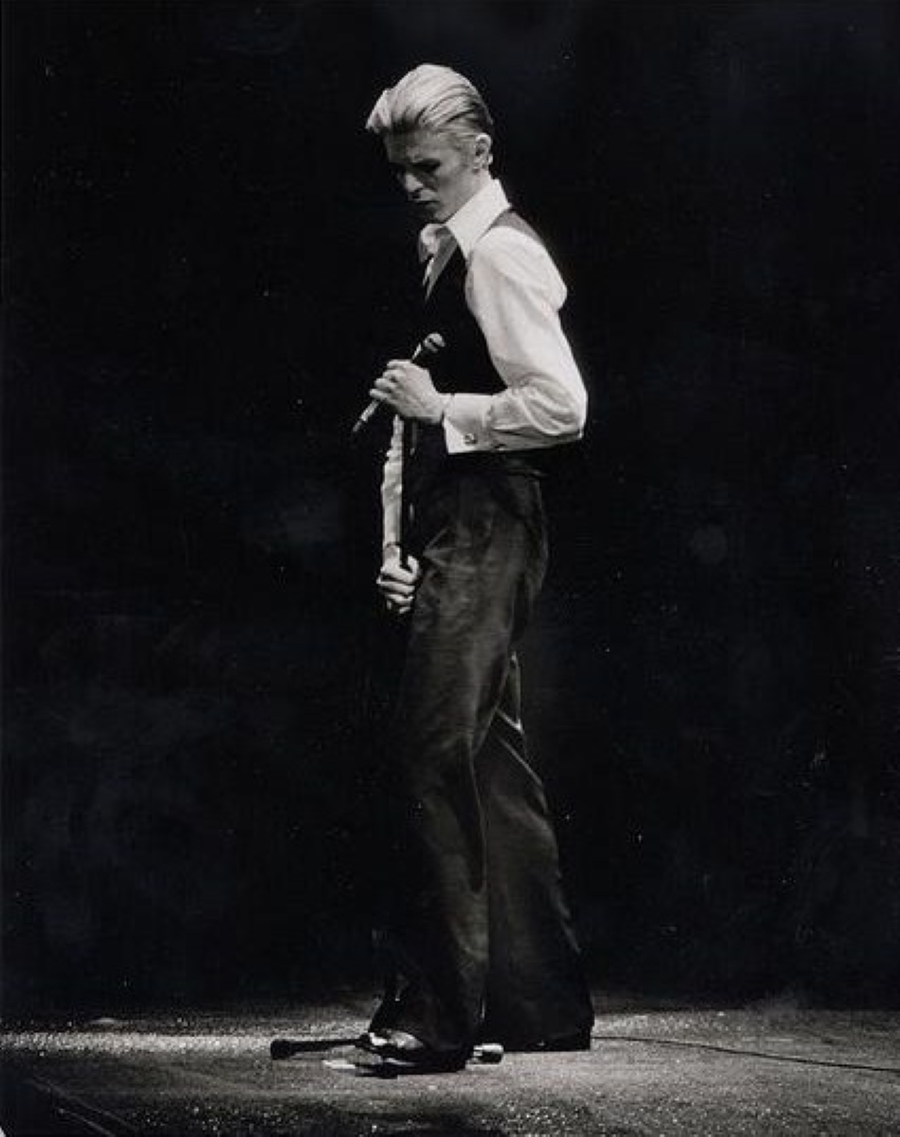
How David Bowie impacted fashion, music, and the arts
David Bowie left an immeasurable impact on the world by releasing 26 albums, starring in 30 films and heavily influencing the fashion industry. A six-time Grammy award winner, he is best known for hit songs such as 'Heroes' and 'Under Pressure,' yet it was his unique fashion sense that made him unforgettable. Bowie's androgynous style propelled him to immediate stardom worldwide. To understand the man behind 'Ziggy Stardust' is to embark on a complex exploration of an individual with multiple personas who delved into various musical genres and challenged conventional gender norms.
 David Bowie in 1975
David Bowie in 1975Where it all started: From long-hair advocate to musical pioneer
Before his musical career, film roles, and the iconic status he now holds, David Bowie served as a spokesperson for the 'Society for the Prevention of Cruelty to Long-Haired Men.' At the age of 17, he made a television appearance where he passionately defended the choice of having long hair.
It would be three years later when his musical journey officially commenced with the release of his self-titled LP, ‘David Bowie.’ Although this initial release achieved limited success, it marked the beginning of a musical career that would span almost five decades, significantly influencing various genres such as glam rock (as seen in ‘Aladdin Sane’), folk (‘Hunky Dory’), hard rock (‘The Man Who Sold the World’), and electronic music (the ‘Berlin Trilogy’ albums).
Throughout each era, Bowie had a distinct musical identity, accompanied by a visual identity that reflected in a variety of personas. This choice allowed Bowie to seamlessly transition between genres and adapt his appearance, giving rise to many of his iconic alter egos, including 'Ziggy Stardust,' 'Aladdin Sane,' 'Halloween Jack,' 'The Thin White Duke,' and 'The Blind Prophet.' These characters not only inspired unique looks that complemented the music but also became integral parts of his life. The most influential of these personas was Ziggy Stardust, featured in the 1972 glam rock classic ‘The Rise and Fall of Ziggy Stardust and the Spiders from Mars.’
The birth of Ziggy Stardust: Bowie's iconic persona
Ziggy Stardust, Bowie's eponymous stardust persona, stands as one of the most influential in his career. This character was otherworldly, yet it maintained a human connection, inspired by the 1970s fascination with Japanese culture. Ziggy Stardust emerged as a response to Bowie's desire to move away from the hippie and denim-clad image of 1960s rock. It became a vessel that allowed him to embrace androgyny, challenging conventional notions of what a rock star should be. The concept of androgyny as a whole was relatively new, emerging after the unisex fashion wave of the mid-1960s.
 David Bowie during the Ziggy Stardust Tour, 1972–1973
David Bowie during the Ziggy Stardust Tour, 1972–1973In 1968, columnist Everett Matlin wrote,
It's not just the way we look; the whole male-female relationship is confused.
David Bowie, the man behind the character, didn't immediately find a receptive audience due to the era's reaction to androgyny. His refusal to conform to the norms of the time stirred controversy, with critics like Richard Cromelin from Rolling Stone stating,
We should all say a brief prayer that his fortunes are not made to rise and fall with the fate of the 'drag-rock' syndrome.
Ziggy Stardust drew inspiration from Stanley Kubrick's "A Clockwork Orange," incorporating bright and tight materials. The character blurred the lines between fashion and music, with Ziggy Stardust's alien elements adding a futuristic aesthetic to the world of fashion.
 David Bowie and Cher
David Bowie and CherDavid Bowie's first venture into fashion
Bowie's fashion sense transcended mere androgyny as he single-handedly set fashion trends with his distinctive styles. Within just a few short years, he introduced three iconic personas: Stardust, Sane, and Duke. Stardust and Sane epitomised the androgyny of their era, with Sane incorporating American influences, inspired by Bowie's time touring the United States. Sane, famously marked by a lightning bolt across his face, embodied a sense of schizophrenia within the character. Sane coincided with Bowie's rising fame and a growing acceptance of the concept of androgyny.
On the other hand, Duke represented a complete reinvention for Bowie, showcasing the artist as a true chameleon. Duke was characterised by blonde hair and a cabaret-inspired fashion, featuring a white shirt, black trousers, and a waistcoat. This character, fueled by Bowie's cocaine addiction, was described by Bowie himself as "an amoral zombie." Although the character officially existed for just one year, it left a lasting impact on both his fashion and music. Bowie's drug addiction eventually led him to Berlin, where he famously recorded his Berlin Trilogy of albums ‘Low,’ ‘Heroes’, and ‘Lodger.’ He would later describe this time period as "the closest you can get to David Bowie."
 David Bowie
David BowieBeyond music and fashion: Bowie's multifaceted influence
The fame he garnered after Stardust and Sane allowed the artist to step into other worlds outside of music and fashion. He had forays in films throughout his entire career with important roles in ‘The Man Who Fell to Earth’ (1976), ‘Labyrinth’ (1986) and ‘The Prestige’ (2006). The first film earned him a Saturn Award for Best Actor. The world of fine arts also experienced a touch of Aladdin Sane, with many paintings, self-portraits and pop art works done throughout his long career. Many important Galleries and Museums have contained his works including The Brooklyn Museum of Art.
Bowie’s everlasting influence
Bowie's early-stage presence and groundbreaking fashion sense have inspired designers for generations. As his career progressed, he collaborated with many of the designers he had influenced. Notably, Alexander McQueen, a designer known for challenging traditional gender roles, designed Bowie's 1996-97 tour costumes. In 2013, the Victoria and Albert Museum in London hosted an exhibition commemorating 50 years of David Bowie, showcasing his profound impact on the worlds of music and fashion through his diverse personas.
Furthermore, Bowie's influence continues to resonate in the works of contemporary designers such as Alexander McQueen, Gareth Pugh, Nick Knight, Dior, and Louis Vuitton. Jean-Paul Gaultier best captured Bowie's impact, stating,
David Bowie inspired me with his creativity, extravagance, sense of fashion, pace, elegance, and his ability to challenge gender norms.
David Bowie transcended the role of a mere musician; his contributions to the arts have left an indelible mark on generations. He epitomises the essence of an icon, having a profound influence across various forms of media that continue to be discussed nearly seven years after his passing. Bowie's personas allowed him to explore music without alienating fans and made him a pioneer in fashion, challenging traditional gender norms. In the world of cinema, he left his mark with important and iconic film appearances.
Simultaneously, his presence was felt in the world of fine arts through his own paintings and as a muse to others. Throughout his extensive and multifaceted career, David Bowie will forever remain an integral part of the artistic world.
As an Art de Vivre subscriber, immerse yourself in a world of culture and creativity and discover our editor’s picks of the best exhibitions to see around the world.
Photo Credits: © Wikipedia
